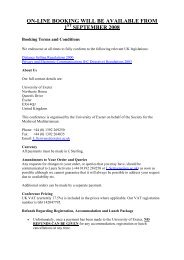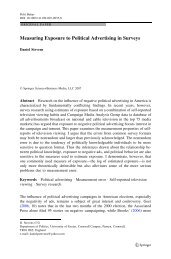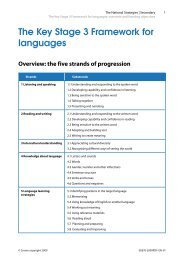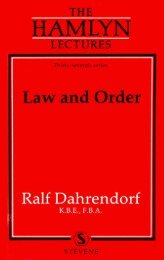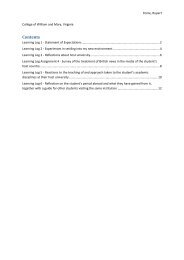speech and respect - College of Social Sciences and International ...
speech and respect - College of Social Sciences and International ...
speech and respect - College of Social Sciences and International ...
Create successful ePaper yourself
Turn your PDF publications into a flip-book with our unique Google optimized e-Paper software.
Notes<br />
to an average <strong>of</strong> $310,000 for a 30-second spot, the most expensive on<br />
any regular network programme. Before the 1992/93 season began,<br />
commercial time was virtually sold out through December. When writer<br />
Diane English accepted her Emmy for the best comedy series she thanked<br />
"the sponsors for hanging in there when it was getting really dangerous."<br />
The admiration was mutual; the ad agency for her regular sponsor said: "I<br />
love being associated with 'Murphy Brown.' . . . the controversy has<br />
worked in a positive sense." New York Times C8 (September 17, 1992).<br />
The hour-long premiere showed Murphy Brown watching Quayle criticise<br />
her. 44 million people saw the episode—4 million more than<br />
watched the Republican convention. Quayle was among them, accompanied<br />
by several single mothers. Newspapers carried pictures <strong>of</strong> Quayle<br />
watching Murphy Brown watching Quayle talking about Murphy Brown.<br />
New York Times A17 (September 23, 1992).<br />
5<br />
Los Angeles Times A14 (January 21, 1992); New York Times s.1 p. 10<br />
(February 23, 1992).<br />
6<br />
186 Searchlight 10 (December 1990).<br />
7<br />
New York Times A8 (March 10, 1992).<br />
8<br />
New York Times A1 (October 17,1990); Los Angeles Times A20 (October<br />
20, 1990). When Custave Courbet's painting "Return From the Conference"<br />
was rejected by the Salon in 1863 he boasted: "I painted the<br />
picture so it would be refused. I have succeeded. That way it will bring me<br />
some money." Quoted in Barnes (1992: 3). When Howard Stern debuted<br />
as disk jockey on KLSX-FM in 1991, 50 advertisers withdrew because he<br />
attacked gays, women, blacks, Latinos, <strong>and</strong> the homeless <strong>and</strong> used<br />
scatological humour. The FCC cited him for indecent broadcasting. A<br />
year later he had become the most popular morning radio personality<br />
among male listeners in New York, Philadelphia, Washington, <strong>and</strong><br />
Baltimore, <strong>and</strong> the advertisers had returned. Los Angeles Times F1 (July<br />
30, 1992).<br />
9<br />
Los Angeles Times F1 (June 13, 1992), F1 (June 16, 1992), F1 (June 18,<br />
1992), F1 (June 19, 1992), D1 (July 4, 1992), B3 (July 25, 1992), A1 (July<br />
29, 1992), D1 (July 30, 1992); New York Times B1 (July 8, 1992). Ice-T<br />
managed to keep the controversy alive. At a San Diego concert he read a<br />
letter from the 1900 member San Diego Police Officers Association<br />
denouncing him, stuffed it in his crotch, <strong>and</strong> sang the song defiantly while<br />
a mostly white crowd yelled "Die, pig, die." Los Angeles Times A3<br />
(October 1, 1992).<br />
Shortly thereafter the New York State Sheriff's Association, which had<br />
joined the campaign against "Cop Killer," sought to suppress a forthcoming<br />
album by San Francisco rapper Paris, whose cover showed a man<br />
with an automatic weapon about to ambush President Bush (the topic <strong>of</strong><br />
one song). The track "C<strong>of</strong>fee <strong>and</strong> Doughnuts <strong>and</strong> Death" included these<br />
lyrics:<br />
As an example so all the blue coats know<br />
Ya get poached when ya fuck with black folk<br />
121




